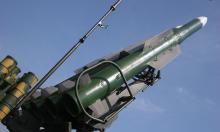Thaw is in store for US economy
Mr Ben Bernanke, the US Fed Chairman, is believed to be more model-driven in his decision-making than his predecessor, Mr Alan Greenspan. Going by last week’s (unanimous) vote to cut the benchmark interest rates 50 basis points, the message from his regression equations cannot have been happy.

The legendary Mr Greenspan puts the probability of a US recession at more than a third. Mr Bill Gross, the manager of the world’s largest bond fund, thinks the Fed has no choice but to cut another 100 bps in the next meetings. The futures markets too have factored in more rate cuts.
The fact is that even before the mortgage crisis erupted, the economy was perceptibly slowing. Fed cuts were coming, anyway, sooner or later. Willy nilly, they had to be brought forward following the breakdown of credit markets.
The key questions are how the American economy is going to perform and how far the Fed will (or must) go with its rate cuts.
There are some crucial signs that there is a thaw in progress. First, if, as seems likely, the mortgage and CDO portfolios of investment banks are not in such bad shape as feared, credit markets could see a quick turnaround, the evidence of which was already there last week in the easing of LIBOR spreads on Fed Funds.
Second, US stock markets rose for days in a row, suggesting ‘big’ and ‘smart’ money sees value even in these dog days. Also, the results of some investment banks, including the big daddy of them all, Goldman Sachs, were better than expected.
Falling house prices are destructive of wealth, but, if confined to the sub-prime sector, may not have widespread adverse effects on the economy. A quick bounce back would, therefore, not surprise and the Fed may not have to go as deep and prolonged in its cuts.
Reflecting, perhaps, the renewed confidence of market players, yields on 10 year Treasuries actually shot up no less than about 30 bps immediately after the rate cut. The explanation that it was inflation fear in a rate-softening environment does not convince as the CPI data has been far from threatening in the last several months.
Did Mr Bernanke and his colleagues put their heart and soul into the rate cut or were they stampeded into it? One must wait for their post-retirement memoirs for an answer, but on this occasion it seems they thought the risk calculus clearly favoured slashing rates.
They may yet be rewarded with a rapid turnaround of the economy making a lax monetary policy unnecessary, thehindubusinessline.com reports.
As Pravda.Ru previously reported the US economy may have an ace in the hole. Foreign trade has become increasingly important to economic growth. Over thepast year,anarrowing U.S. trade deficit made the largest contribution to growth in 14 years, and the pattern is likely to continue well into 2008.
The housing recession and tighter credit conditions may even accelerate that trend: As U.S. demand slows, so will imports. At the same time, solid growth overseas and a new downturn in the dollar will continue to power U.S. exports, and that will boost U.S. manufacturers' revenues and profits. In fact, this may well mark the beginning of the long-awaited realignment of global growth that will rebalance trade and capital flows between the U.S. and the rest of the world.
The great potential for an even narrower trade gap in 2008 shows up in the relative growth rates for exports and imports so far this year. Through July, real exports of goods have grown 7.7% from the same period the previous year, while imports are up 2.4%. Consider that because imported goods are more than 60% greater than exports, the growth rate of exports has to be at least 60% faster just to hold the deficit steady. Until last year, that was a tough hurdle. But so far this year exports are growing more than three times faster than imports.
The fuel under exports comes from a robust global economy and a competitive dollar, and both factors will continue to offer support. In early September the trade-weighted dollar hit a record low against a basket of major currencies, and hovered near a 10-year low vs. all trading partners. That drop has effectively cut the price of U.S. products in foreign markets, while making imports more expensive in the U.S.
Heading into 2007, the greenback had fallen 18% against all currencies since its peak in early 2002, and since the beginning of this year it's down an additional 4.1%. Two factors that tend to increase the attractiveness of assets outside the U.S. argue for a further decline: Growth prospects abroad continue to look brighter than in the U.S., and the Fed appears set to reduce interest rates while other central banks are in a holding pattern. And the prospects overseas are for further increases as the credit crisis abates, businessweek.com reports.
One of the evidence that exports could play a crucial role in the future development of the US economy is the fact that Indians in pursuit of the American dream need no longer cross the seven seas. In fact, they can do it from home itself, as nine of the top 10 American companies to launch a career with are present here.
Source: agencies
Prepared by Alexander Timoshik
Pravda.ru
Subscribe to Pravda.Ru Telegram channel, Facebook, RSS!




